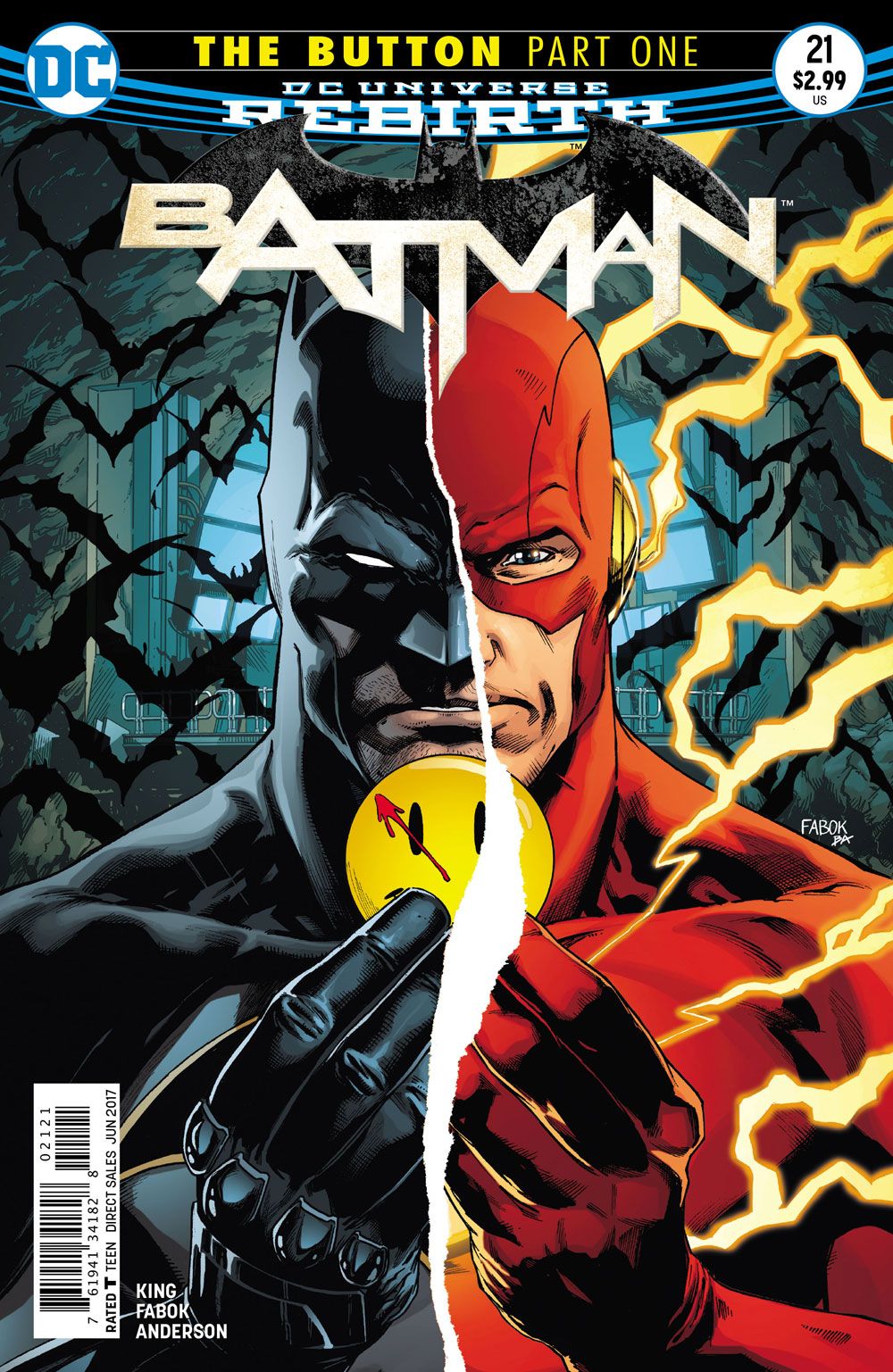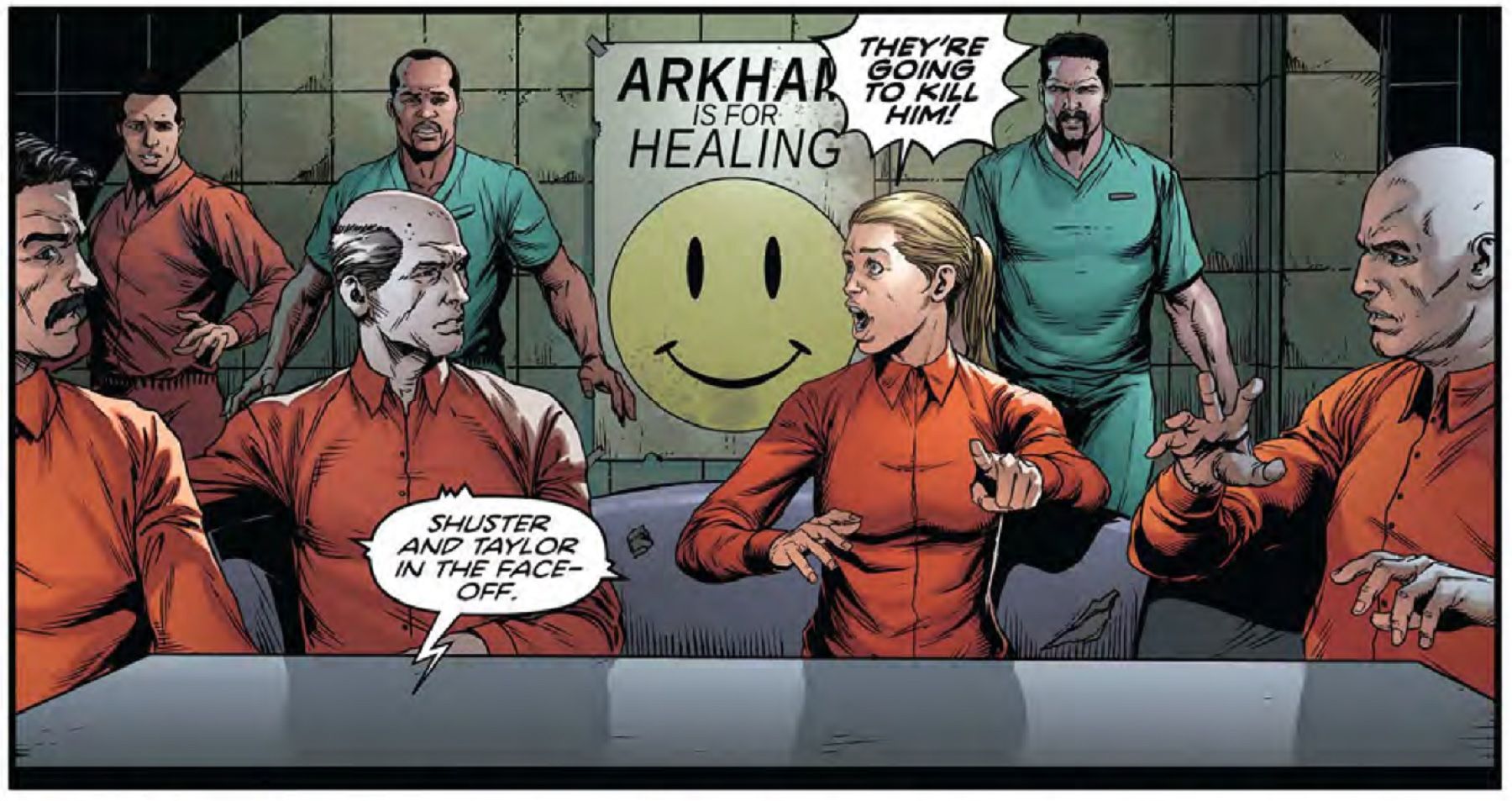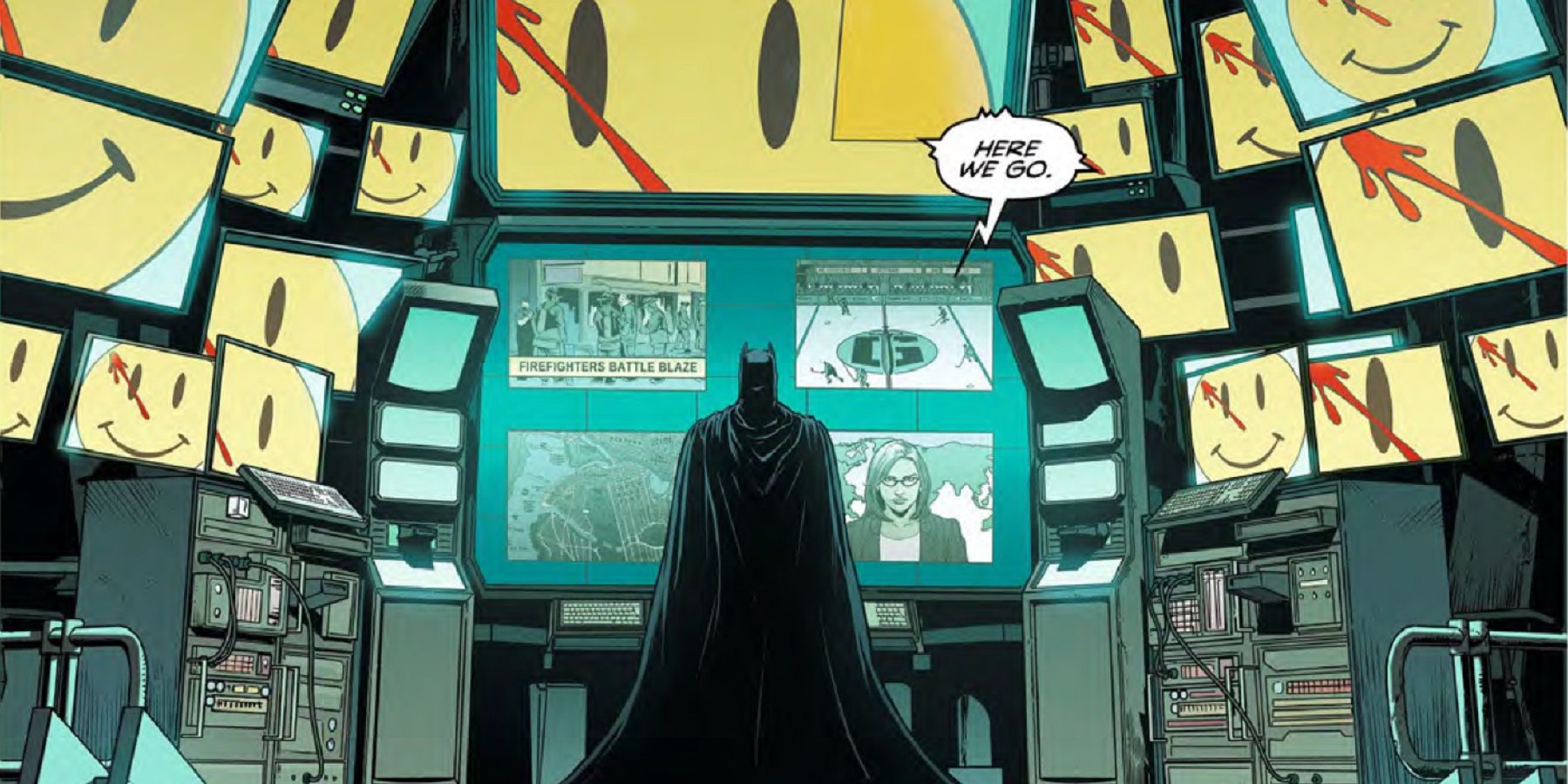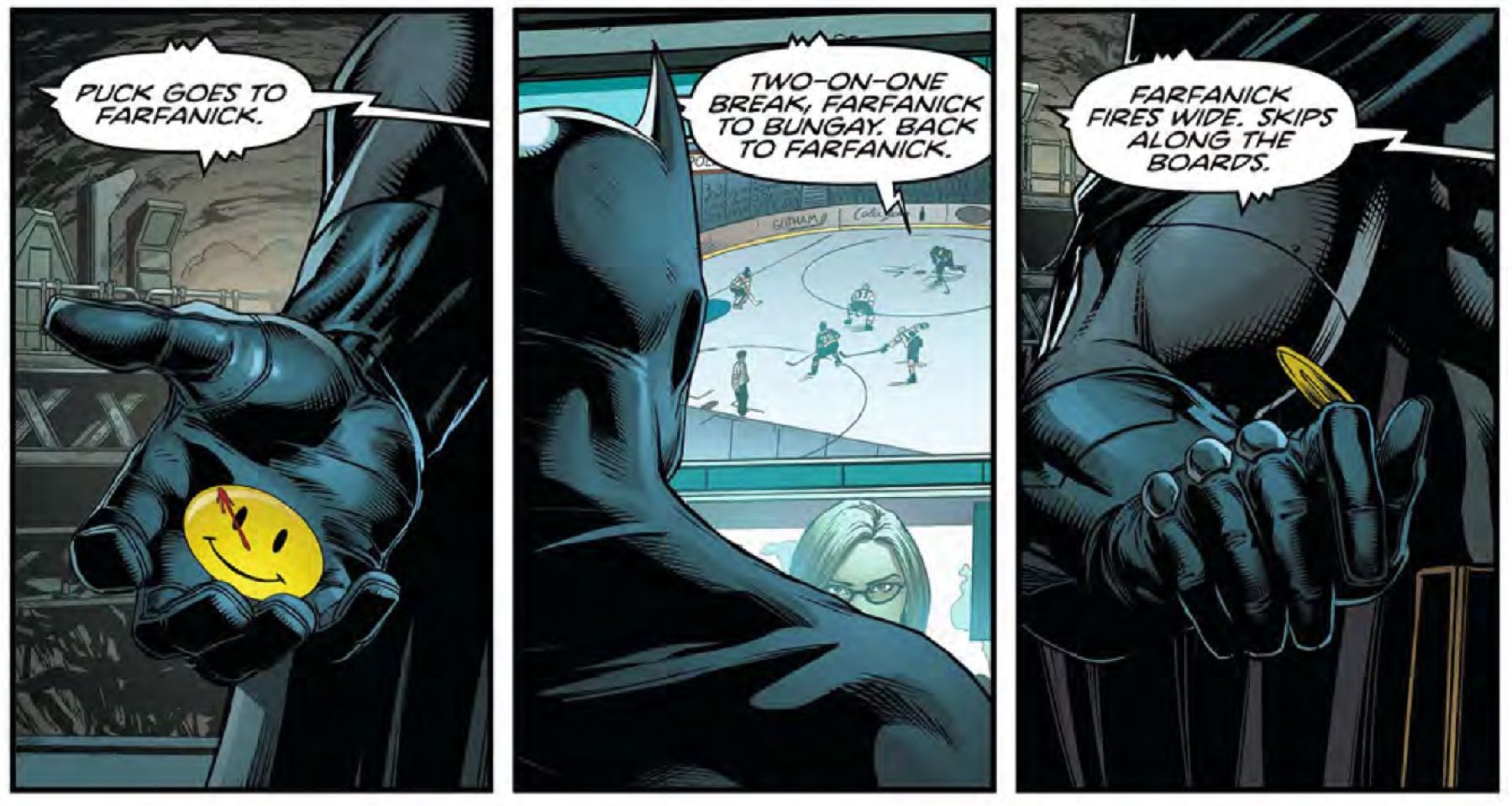REVIEW: Batman #21
- WRITER
- Tom King
- Artist
- Jason Fabok
- Letterer
- Deron Bennett
- Cover Artist
- Brad Anderson, David Fabok
- Publisher
- DC Comics
- Price
- 2.99
- Release Date
- 2017-04-19
- Colorist
- Brad Anderson
It's been nearly a year since "DC Universe: Rebirth" #1 stunned fans with its shocking reveal on the final page, establishing an unexpected connection between the DC Universe and "Watchmen," the acclaimed 1986 comic series by Alan Moore and Dave Gibbons. The lynchpin for that connection is the now-iconic, blood-stained smiley face button worn by The Comedian and found by Rorschach on the street after his murder, now again found by Batman inside his very own Batcave. Long assumed to be two separate, unrelated continuities, the discovery of the button upends that assumption and has instigated countless discussions on how "Watchmen" could possibly impact the DCU. That possibility begins to be explored by Tom King and Jason Fabok in "Batman" #21, the first of the four-part arc appropriately titled "The Button" that crosses over with upcoming issues of "The Flash."
Watchmen’s Comedian Button Is Crucial for [SPOILER]’s Return In Batman
The storyline's first chapter doesn't provide much in the way of answers; in fact, it really only raises more questions, but the issue wonderfully continues to tease the possibilities of the universes' merger. The Dark Knight Detective doesn't get the opportunity to undertake much detecting and solve the mystery behind the button, but King and Fabok indulge in plenty of fanboy fun with the setup.
The issue kicks off with the confirmation of a seemingly unrelated character's return – one who was first seen within the pages of "Batman" months ago – and entices the reader with cryptic clues of what might be coming in the DC Universe's future. This is before the button even makes its appearance, which it does on the following splash page, displayed larger than life on multiple Batcave monitors, indicating that the artifact looms large over DC's Rebirth universe.
"Watchmen" does indeed loom large over this issue, and both King and Fabok pay tribute to Moore and Gibbons' storytelling technique throughout. Fabok extensively uses the nine-panel grid layout alternating between vantage points, a structure used to great effect throughout the entire "Watchmen" series. King's direct and drawn-out narrative similarly evokes Moore's original approach, and the pair's static, almost agonizing focus on any given sequence pays terrific homage to the comic it's patterned after while establishing the basis for subsequent chapters of this crossover. The context of the story helps clarify that King and Fabok are indeed paying homage to "Watchmen," and not merely trying to capitalize on it.
The strange circumstance behind the button's unexpected find is effectively built upon by King, lending credence to the idea that reason the button turned up in the Batcave in the first place is a very mysterious one indeed. It appears to be far more than a cheap pop-culture memento from another era – it's responsible for nearly every surprise put forth by King this issue – and King postulates that this otherwise unremarkable piece of junk just might be something far greater than anyone had ever bothered to think about. It's the impetus for the return of a villain believed dead, as well as an even bigger surprise surrounding the same character later on. King's story piles on the thrills and suspense, to the point where the issue can readily be enjoyed for its strengths, rather than condemned for any lack of resolution.
A theme that was frequently used by Moore throughout "Watchmen" was that of symmetry, and it's one that King and Fabok draw upon somewhat here. The final sequence, in fact, mirrors a classic and memorable scene from "Crisis on Infinite Earths," and the creative team also references moments from other past DC storylines, including some from King's own current "Batman" run. King's skillful acknowledgment of past stories continues to demonstrate his talents as a clever and diverse writer – skills he has proven throughout his time on the title - while Fabok proves equally masterful at translating those thoughts into pictures.
"Batman" #21 builds excitement by respectfully exploiting what has come before, and serves as a tremendous entry into DC's Rebirth mythos. Part two of "The Button" takes place in "The Flash" #21, on sale April 26.




